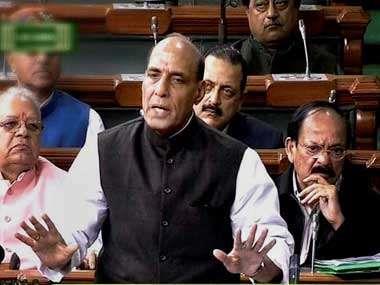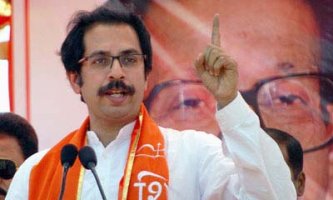July 13, 2016
CLEVELAND — Hillary Clinton’s lead over Donald Trump has withered to 3 percentage points, signaling their battle for the White House has become too close to call heading into the two major-party national conventions, according to a new McClatchy-Marist poll.

July 13, 2016
CLEVELAND — Hillary Clinton’s lead over Donald Trump has withered to 3 percentage points, signaling their battle for the White House has become too close to call heading into the two major-party national conventions, according to a new McClatchy-Marist poll.

In this July 8,2016, photo, Democratic presidential candidate Hillary Clinton speaks at the African Methodist Episcopal church national convention in Philadelphia.
Clinton, the presumptive Democratic presidential nominee, now leads Trump by 42 to 39 percent in a head-to-head matchup. While Republicans and Democrats are solidly behind their candidates, independents are divided, 36 percent for Clinton, 33 percent for Trump — and 23 percent undecided.
Clinton does somewhat better in a four-way race, topping Trump 40 to 35 percent. Libertarian Gary Johnson has 10 percent support, while the Green Party’s Jill Stein has 5 percent.
Either way, Clinton’s support has slipped noticeably, particularly in the one-on-one matchup with Trump. It was the first time her support had dropped below 50 percent in polls going back a year.
Her numbers plunged as the controversy over her private email server while secretary of state dominated political news. On July 5, the poll’s first day, FBI Director James Comey recommended that Clinton not be charged but termed her aides and her “extremely careless” in their handling of classified material. Two days later, Comey testified before a House of Representatives committee.
“The good news for Hillary Clinton is that despite a very rough week, she still has a narrow edge,” said Lee Miringoff, the director of the Marist Institute for Public Opinion in New York, which conducted the survey. “The bad news is these issues don’t seem to be going away.”
The email furor was a favorite reason many voters gave for rejecting Clinton. “Hillary has too many scandals going on,” said Ron Pool, 43, an independent voter from San Antonio.
Helping Clinton, though, is that Trump, whom Republicans expect to nominate next week at their convention, is just as reviled.
Sixty-four percent see the business magnate unfavorably, while 60 percent view Clinton that way.
“Clinton’s a liar,” said Rebecca Davis, 36, an independent voter from Kansas City, Mo., who’s backing Trump. But while the email controversy bothered Stephen Chen, 33, an independent from Westfield, Ind., he can’t vote for Trump.
“I don’t think he understands how the economy works,” Chen said.
The poll vividly illustrated the stakes for both candidates at their upcoming conventions. Republicans will meet in Cleveland next week, and the following week, Democrats will gather in Philadelphia.
The poll found that Clinton is winning the support of 57 percent of voters who backed Sen. Bernie Sanders of Vermont, her chief rival, who endorsed her Tuesday. Trump wins support from 60 percent of the Republicans who had backed other candidates.
That suggests “these conventions are really important,” Miringoff said. About one-fourth of Sanders voters or non-Trump Republican voters said they were now behind Stein or Johnson.
The poll underscored the high stakes for voters. Nearly 3 in 4 said it did make a difference who was elected.
It punctuated the two different Americas lining up on each side.
Clinton leads by 81-6 percent among African-Americans, 52-26 among Latinos, 51-33 among women, 50-34 among college graduates, 47-31 among those younger than 30 and 45-38 among those who make less than $45,000 a year.
Trump leads by 49-34 percent among whites, 47-33 among men, 44-39 among non-college graduates and 46-40 among those 60 and older.
The poll also revealed regional differences in bright colors: Clinton leads comfortably in the Northeast and the West. Trump triumphs in the South, and the two are even in the Midwest.
Make no mistake, though. Voters are not solely being drawn to these candidates. They are often driven as much by their dislike of the opposition.
Just 49 percent of Clinton voters said they were motivated by their support for her, while 48 percent were driven more by their opposition to Trump. That’s particularly true for young voters. Just 28 percent of young Clinton voters support her because they like her; 70 percent support her as a vote against Trump.
And just 41 percent of Trump voters are drawn to him, while 56 percent end up there as an anti-Clinton vote.
Clinton is seen as the candidate with the proper temperament and experience. Voters trust her more to handle immigration and policies toward Muslims, gays and Mexican immigrants who are in the U.S. illegally.
Trump, though, edges her as on job creation, and the two are in a virtual tie as to who is perceived as better able to conduct the war on terrorism and trade policy. Trump has railed against Republican free trade orthodoxy and pledged to get tougher with foreign countries; Clinton is more open to free trade pacts.
Voters who embraced Trump or Clinton cited each as badly needed agents of change. “There needs to be a big change, and Trump is the only one capable of doing that,” said Roger Lambert, 72, a retiree from Decatur, Ala.
“Look at history,” said Davis of Kansas City, who owns a small business. “When the country needed something different in 1980, Ronald Reagan came along, and he was not a lifelong politician.”
But Marilyn Mordes, 61, a registered nurse from Stuart, Fla., argued that someone savvy about the political system is what the nation badly needs.
The email furor, she said, is a distraction. “It’s dragged on too long, and it’s nothing of the sort that hasn’t happened to other people,” Mordes said.
METHODOLOGY
This survey of 1,249 adults was conducted July 5-9 by The Marist Poll, sponsored and funded in partnership with McClatchy. People 18 and older residing in the contiguous United States were contacted on landline or mobile numbers and interviewed in English by telephone using live interviewers. Landline telephone numbers were randomly selected based on a list of exchanges from throughout the nation from ASDE Survey Sampler Inc. The exchanges were selected to ensure that each region was represented in proportion to its population. Respondents in the household were randomly selected by first asking for the youngest male. This landline sample was combined with respondents reached through random dialing of cellphone numbers from Survey Sampling International. After the interviews were completed, the two samples were combined and balanced to reflect the 2013 American Community Survey one-year estimates for age, gender, income, race and region. Results are statistically significant within 2.8 percentage points. There are 1,053 registered voters. The results for this subset are statistically significant within 3.0 percentage points. The error margin was not adjusted for sample weights and increases for cross-tabulations.
Courtesy: Tribune Washington Bureau







































































































